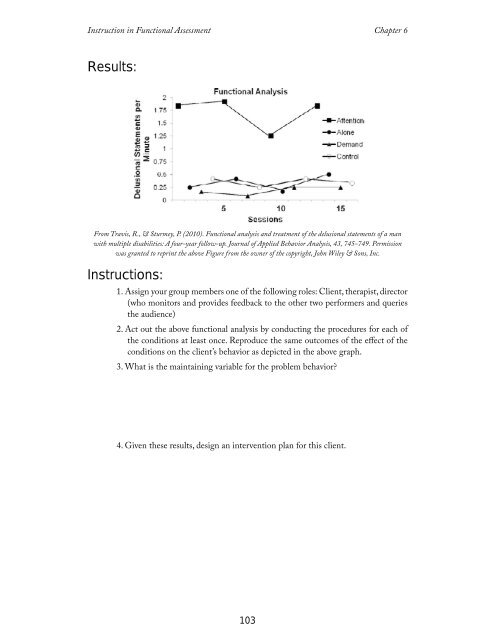Instruction in Functional Assessment, 2014a
Instruction in Functional Assessment, 2014a
Instruction in Functional Assessment, 2014a
Create successful ePaper yourself
Turn your PDF publications into a flip-book with our unique Google optimized e-Paper software.
<strong>Instruction</strong> <strong>in</strong> <strong>Functional</strong> <strong>Assessment</strong> Chapter 6<br />
Results:<br />
From Travis, R., & Sturmey, P. (2010). <strong>Functional</strong> analysis and treatment of the delusional statements of a man<br />
with multiple disabilities: A four-year follow-up. Journal of Applied Behavior Analysis, 43, 745-749. Permission<br />
was granted to repr<strong>in</strong>t the above Figure from the owner of the copyright, John Wiley & Sons, Inc.<br />
<strong>Instruction</strong>s:<br />
1. Assign your group members one of the follow<strong>in</strong>g roles: Client, therapist, director<br />
(who monitors and provides feedback to the other two performers and queries<br />
the audience)<br />
2. Act out the above functional analysis by conduct<strong>in</strong>g the procedures for each of<br />
the conditions at least once. Reproduce the same outcomes of the effect of the<br />
conditions on the client’s behavior as depicted <strong>in</strong> the above graph.<br />
3. What is the ma<strong>in</strong>ta<strong>in</strong><strong>in</strong>g variable for the problem behavior?<br />
4. Given these results, design an <strong>in</strong>tervention plan for this client.<br />
103


















